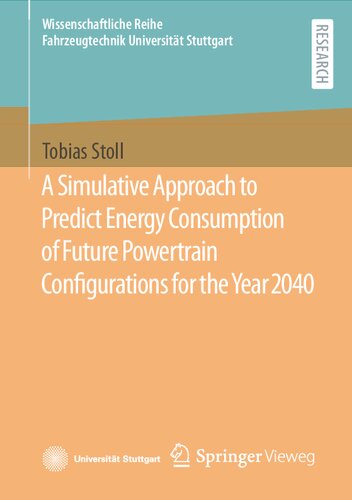

Most ebook files are in PDF format, so you can easily read them using various software such as Foxit Reader or directly on the Google Chrome browser.
Some ebook files are released by publishers in other formats such as .awz, .mobi, .epub, .fb2, etc. You may need to install specific software to read these formats on mobile/PC, such as Calibre.
Please read the tutorial at this link: https://ebookbell.com/faq
We offer FREE conversion to the popular formats you request; however, this may take some time. Therefore, right after payment, please email us, and we will try to provide the service as quickly as possible.
For some exceptional file formats or broken links (if any), please refrain from opening any disputes. Instead, email us first, and we will try to assist within a maximum of 6 hours.
EbookBell Team

0.0
0 reviewsThis book deals with the simulative prediction of efficiency and CO2-emissions of future powertrain systems for the year 2040. For this purpose, a suitable simulation environment is first created. This is followed by a technology extrapolation of all relevant powertrain systems, for example: combustion engines, electric drives, fuel cells as well as all relevant additional components. These components are then used to build 57 vehicle variants for the simulation. Finally, extensive simulations of the vehicle variants are carried out, evaluated and compared. Comprehensive tables of results are available for all simulated vehicle variants. The evaluations are of interest to anyone concerned with energy consumption and CO2-emissions of future vehicles.